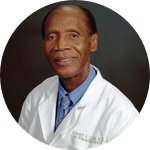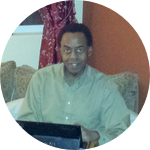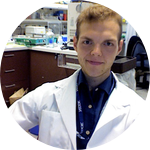About This Project
Harvard Medical School has reported successful aging reversal using genetic and biochemical methods in the labs of Dr. George Church and Dr. David Sinclair. The Church lab has encouraged us to provide a system to validate such results by testing whether human subjects actually function physically at a younger age. We will research which functional aging biomarkers (reaction times, sense of touch, etc.) and which testing techniques can provide the most useful results.
Ask the Scientists
Join The DiscussionWhat is the context of this research?
In 2013 study, Harvard Medical School's Sinclair Lab caused muscle tissue of 60 year old equivalent mice to resemble 20 years old after one week of injections of NMN! The study is at this link.
At a 2014 event in this video link at 18:22, Dr. Church, describes a gene altering aging reversal in a sample of his own cells. The Church Lab's Personal Genome Project (PGP) also hosts full human genomes and trait data from thousands of volunteers, including Alex and me.
We will determine suitable functional age biomarkers and test technology via research and expert advice from Church, Sinclair and others. We will compare that data to the H-SCAN Test's 12 biomarkers and hardware. I sold it's 1990 technology to doctors worldwide until the inventor retired. See H-SCAN video in Additional Info section.
What is the significance of this project?
Church and Sinclair's belief that reversing aging is inevitable, not speculative, and their credentials as top world scientists are reported in Time and the Boston Globe.
The Church Lab has encouraged us to build a new updated test to succeed the H-SCAN. The test will measure functional biomarkers of the lab's PGP subjects compared to their sequenced genomes and of clinical trial subjects elsewhere, estimating the age at which a person physically functions, enabling researchers to validate measurements from genetic and biochemical aging interventions and reliably compare results across subjects, studies and approaches.
Our research will determine which biomarkers provide reliable indications of aging level and which test technologies can reliably measure the biomarkers at reasonable cost.
What are the goals of the project?
Our goal is preparation of a device requirements document that an engineer can use to create a design for the test prototype.
The document will contain a list of the functional aging biomarkers to be tested, the range of values to be tested, how each biomarker declines with age, why each biomarker was selected, specifications and sources of testing instruments for each biomarker, integration of the instruments in the device, sequence of tests, and requirements for user interface, software calculations, regulatory agencies, exterior design, connectivity, data security, and installation.
This will be accomplished by researching scientific literature and contacting scientists, health practitioners, doctors using the H-SCAN, the H-SCAN inventor, and test instrument providers.
Budget
Goal 1: Contact health practitioners who use the H-SCAN to track progress of patients in anti-aging programs; and researchers at Harvard (including Dr. Church and Dr. Sinclair), MIT, and elsewhere who need to validate genetic and biochemical results of aging interventions by comparing them with functional physiological results. We will learn from approximately 50 people what aging biomarkers would be most relevant. Review scientific and commercial literature to identify the most relevant cognitive and physiological biomarkers of aging and testing techniques. Examine databases of biomarker measurement data and determine the range of values for humans.
Goal 2: Use device requirements document funded by $1500 from first goal to enable us with engineers to create a device design that includes:
Console, micro controller selection, CAD layouts
Software development
Windows interface to record data and display data
Web/cloud interface to receive uploaded data and display on web browser
Endorsed by
Meet the Team
Affiliates
Affiliates
Elliott Small
I did my first science projects at the age of 10, among them, photo processing and electricity experiments. I did surgery on mice at age 13 as a high school freshman. Those experiences, along with being valedictorian helped me to enter Harvard College. As an adult, I have been a chemist at General Foods and director of a government funded program in Washington DC called the Technology Commercialization Center where we assisted an electric car company. I have been a computer programmer, and I am founder of a company that has 2 patents and 2 patents pending for rapid battery charging technology.
I became sole distributor for a functional age test used by medical practices and other care providers. It measures 12 biomarkers of aging and provides an estimated functional age compared to chronological age. I have experienced unusually slow aging. I hope to eventually learn why through the sequencing of my DNA by the Personal Genome Project started by scientists at Harvard Medical School.
Alexander Hoekstra
Co-Founder and Operations Lead at the Rapid Deployment Vaccine Collaborative (RaDVaC), a project of the 501(c)(3) non-profit Mind First Foundation, focused on research and development of open-source and radically accessible vaccinology tools.
Additional Information
Potential Stretch Goals
1. Prepare detailed specs and a design for the new assay tool. Our priority is developing a low-cost, modular console for integrating multiple cognitive & biometric technologies that can be used to design, conduct, and compare the results of scientific studies in aging research.
2. Use the design to build a prototype tool for measuring aging biomarkers.
3. Build duplicates of prototype
4. Test many subjects in order to build a database of results for persons of various ages, genders, ethnicities, etc. and develop statistical models and functional age calculation algorithms.
5. Build multiple units for use by Harvard Medical School and others.
7 minutes of Clips from Demonstration and Instructional Video in the H-SCAN Test (See list of 12 H-SCAN biomarkers below video.)
12 Functional Age Biomarkers Used by the H-SCAN
1. Auditory reaction time
2. Highest audible pitch
3. Vibrotactile sensitivity
4. Visual reaction time
5. Muscle movement time
6. Lung: forced vital capacity
7. Lung: forced expiratory volume, 1 sec
8. Decision reaction time
9. Decision movement time
10. Memory
11. Alternate button tapping
12. Visual accommodation (extent of need for reading glasses)
The H-SCAN inventor's company discontinued the H-SCAN when the inventor retired from the business.
Alex Hoekstra Presenting at Harvard Medical School PGP Conference

Elliott with H-SCAN at Harvard Medical School PGP Conference

Project Backers
- 30Backers
- 149%Funded
- $2,247Total Donations
- $74.90Average Donation


